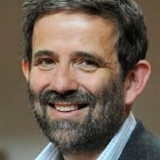Global climate change stands out from most environmental problems because it will span generations and force us to think in new ways about intergenerational fairness. It involves the delicate problem of complex coordination between countries on a truly global scale. As long as fossil fuels are too cheap, climate change policy will engage all major economies.
The costs are high enough to make efficiency a priority, which means striving toward a single market for carbon—plus tackling the thorny issues of fairness. Hopes for a grand deal were mercilessly shattered at Copenhagen in December 2009 and in other recent UNFCCC meetings, with the result that ‘‘green growth’’ is promoted as an alternative path. Indeed, green growth is clearly the goal, but it is no magic bullet. The world economy will require clear and rather tough policy instruments for growth to be green—and it is naıve to think otherwise. Growth, green or not, will boost demand for energy and coal is normally the cheapest source. The magnitude of the challenge is greater if we also consider the problems related to nuclear (fission) energy and, in some instances, to bioenergy (such as its competition for land that may be essential for the poor). This paper discusses some necessary ingredients for a long-term global climate strategy. As we wait for the final (and maybe elusive) worldwide treaty, we must find a policy that makes sense and is not only compatible with, but facilitates the development of such a treaty.
Files and links
Request a publication
Due to Copyright we cannot publish this article but you are very welcome to request a copy from the author. Please just fill in the information beneath.

